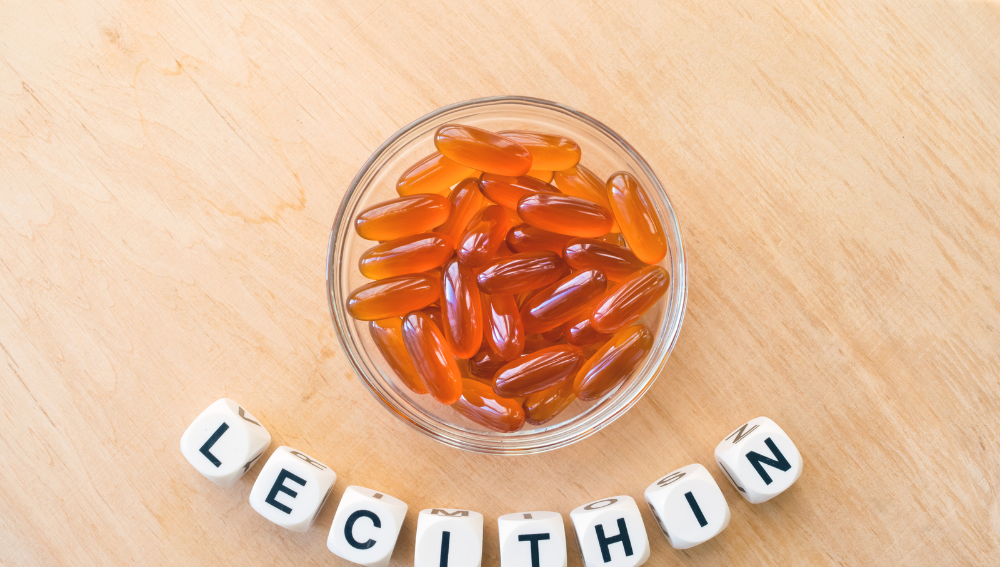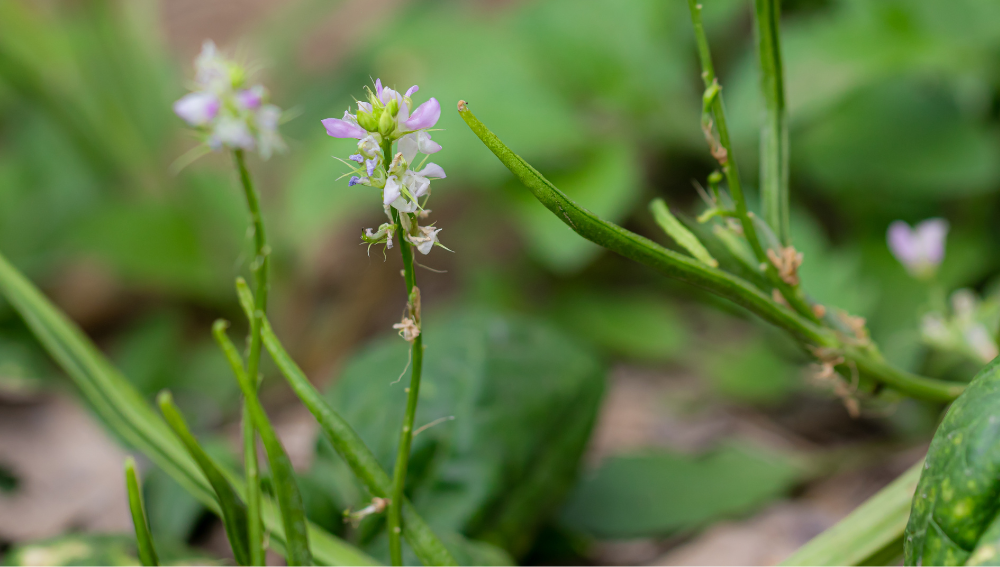When it comes to making homemade gummies, lecithin is a popular ingredient known for its emulsifying properties. It helps maintain the desired texture and ensures even distribution of ingredients, such as flavorings and colors.
However, some people may need or want to find an alternative to lecithin, whether due to allergies, dietary restrictions, or personal preferences.
There are various natural and synthetic alternatives to lecithin that can still provide the desired results when making gummies.
In this article, we will discuss some of these substitutes and how they can be utilized in gummy recipes. Understanding these options can help you create delicious gummies without relying on lecithin.
Key Takeaways
- Lecithin is an emulsifier often used in gummies, but alternatives are available for those with allergies or dietary restrictions.
- Natural and synthetic substitutes can be used to achieve the desired texture in gummies.
- Oils and other food additives can serve as effective replacements for lecithin in recipes.
Understanding Lecithin

Lecithin is a naturally occurring phospholipid found in many plant and animal sources. It serves as a versatile emulsifier and stabilizer in various food and pharmaceutical applications.
As a food additive, it is utilized for its ability to bind both water and fat, making it an excellent ingredient in food production where texture and consistency are important factors.
In the context of gummy production, lecithin is commonly used as an emulsifier to ensure a smooth, even consistency and to prevent separation of ingredients.
Additionally, lecithin has gained popularity in the cannabis industry due to its role in enhancing the bioavailability of cannabis-infused edibles.
However, some individuals may prefer to avoid lecithin, as it is often derived from highly processed sources such as soy or sunflower oil. For those seeking a lecithin alternative, a variety of options are available.
One substitute to consider is agar-agar, a natural gelling agent obtained from seaweed. Agar-agar not only serves as a vegan alternative to gelatin but can also function as a lecithin replacement when used in the right proportions.
Agar-agar helps stabilize gummy mixtures, providing a similar texture without the need for an emulsifying agent.
Another option is glycerin, a clear, odorless liquid often used as a humectant in food and cosmetic products. Glycerin can replace lecithin as an emulsifier in gummies, contributing to the desired texture while maintaining stability.
To use glycerin in place of lecithin, it is essential to adjust the recipe’s water content accordingly.
It is important to note that lecithin alternatives may result in slight variations in texture, stability, or shelf life compared to gummies made with lecithin.
However, with proper formulation adjustments, suitable substitutes can be found for those seeking to avoid this common food additive.
Lecithin in Gummies

Lecithin is an essential ingredient in gummies for its emulsifying properties. It helps to create a uniform mixture, maintaining the consistency and texture of the final product. Gummies typically consist of gelatin, which gives them their firm and chewy structure.
No products found.
Combining gelatin with other ingredients, such as flavoring agents and sweeteners, can sometimes be challenging due to the different water and oil solubility. Lecithin eases this process and ensures the gummies have a perfect balance of flavor and texture.
Properly incorporating lecithin into a gummy mixture helps achieve a desirable texture. Too little lecithin can result in a gummy that is too firm or separate from the other ingredients during setting, while too much can lead to a softer or even greasy-feeling product.
Gummies made without lecithin can perform inconsistently in various conditions, such as temperature changes or prolonged storage.
Lecithin also plays a role in shaping gummies, since it helps release the gummy mixture from molds more easily. This is a crucial factor when making gummies with intricate shapes or designs.
Without lecithin, the process of removing the gummies from the mold could be frustrating and lead to poor-quality outcomes.
In summary, lecithin serves a significant role in creating gummies with consistent flavor and texture. It ensures that the gelatin, flavorings, and other ingredients mix harmoniously and stay together throughout the setting process, resulting in a chewy, firm, and flavorful gummy treat.
Moreover, the addition of lecithin makes the molding process smoother and guarantees the final product maintains its desired shape.
Why Use Lecithin Substitute
Lecithin is a popular ingredient in gummy production due to its ability to emulsify fats, improve texture, and enhance the bioavailability of certain ingredients. However, there are various reasons to consider a lecithin substitute.
One significant concern is allergies. Some individuals experience allergic reactions to lecithin, predominantly when derived from soy or eggs. These reactions may range from mild to severe, justifying the need for an alternative ingredient.
Additionally, many lecithin sources are genetically modified. With increasing GMO concerns, some consumers seek GMO-free alternatives in their food products, including gummies.
A substitute can accommodate this preference, promoting a GMO-free option.
Health risks also play a role in switching to lecithin substitutes. While lecithin is generally safe, high doses may cause gastrointestinal issues, unpopular with consumer preferences. To eliminate these risks, alternative ingredients can be an effective solution.
Furthermore, vegans and vegetarians might choose to avoid lecithin due to its animal-derived origins, typically from eggs.
By offering a plant-based substitute, gummy producers can expand their customer base and cater to those with dietary restrictions.
High cholesterol content in certain lecithin types is another reason consumers might steer away from it. Some individuals, particularly those with heart conditions or other health concerns, may prefer gummies formulated with cholesterol-free or low-cholesterol ingredients.
It’s important to consider the impact of substitute ingredients on a gummy’s potency and bioavailability. A suitable lecithin substitute should display similar properties, ensuring the effectiveness of the product and maintaining consumer satisfaction.
Finally, shelf life plays a critical role in any food product, including gummies. Lecithin substitutes should not compromise a gummy’s storage capabilities or longevity, so finding an alternative that promotes a similar shelf life is crucial.
Natural Lecithin Alternatives

Lecithin is a key ingredient in gummies, often used for its emulsifying properties. However, some people may want to avoid using it because of allergies or dietary restrictions.
In this section, we will discuss some natural alternatives to lecithin that can be used in gummies.
Egg Yolk: Egg yolk is a natural source of lecithin. It contains phospholipids that can serve as an excellent emulsifier. Egg yolk can be a suitable option for those who do not have an egg allergy and are not following a vegan diet.
Soybeans: Soy lecithin is derived from soybeans and is one of the most commonly used sources of lecithin. It can be a good alternative to egg yolk since it is plant-based.
However, it’s essential to be cautious if you have a soy allergy or are avoiding soy-based products.
Sunflower Seeds: Sunflower seeds can serve as another natural source of lecithin. Extracted from sunflower seeds, sunflower lecithin is a rich source of phospholipids and is a popular choice for those looking for a soy-free option.
No products found.
This alternative is suitable for individuals following a plant-based diet, as well as those with soy allergies.
Sunflower Lecithin: It is a widely-used, non-GMO, and allergen-free alternative to soy lecithin. It offers similar emulsifying properties and can easily be incorporated into gummies recipes without altering taste.
Peanuts: Peanuts are rich in natural phospholipids and can be used as an alternative to lecithin. However, it is essential to be aware of peanut allergies, which are prevalent among children and adults.
Make sure to check if the person consuming the gummies has a peanut allergy before using this alternative.
In summary, several natural alternatives to lecithin exist for those who want to avoid using it in gummies. Egg yolks, soybeans, sunflower seeds, sunflower lecithin, and peanuts are some options that can be used depending on individual dietary needs and allergy considerations.
Other Food Additive Substitutes

Guar gum and xanthan gum are both excellent substitutes for lecithin in gummies. They serve as natural emulsifiers and help bind ingredients together, providing a smooth texture and stability in various food products.
Guar gum is derived from guar beans, while xanthan gum is produced through fermentation of simple sugars.
Guar gum has a similar function as lecithin in gummies, acting as a thickening agent. It also has the ability to stabilize and emulsify mixtures, ensuring a consistent texture throughout the product.
To use guar gum as a lecithin substitute, use it in a 1:1 ratio.
Xanthan gum is another alternative that thickens and stabilizes products. Slightly more potent than guar gum, it requires less quantity in recipes.
When substituting lecithin with xanthan gum, keep the ratio at 1 part xanthan gum to 2 parts lecithin.
For a natural sour flavor and acidity, consider adding citric acid to gummies. This ingredient can enhance flavor and act as a preservative.
However, it does not function as an emulsifier like lecithin, so it is vital to pair it with another substitute from this list if lecithin’s emulsifying properties are needed.
Mustard is an unexpected yet effective alternative for lecithin. Its natural emulsifying properties can help bind gummy ingredients together. With its strong flavor, carefully adjust the amount used to avoid overpowering the gummy taste.
In summary, guar gum, xanthan gum, citric acid, and mustard can all be considered as alternatives to lecithin in gummies.
These substitutes provide various benefits, such as emulsification, thickening, and flavor enhancement, making them suitable choices for gummy recipes.
Substitutes and Their Use in Recipes
When it comes to gummy recipes, lecithin acts as an emulsifier that helps bind the ingredients together. However, there are alternatives that can be used instead of lecithin in gummies.
Here are some of the effective substitutes and how to use them in different recipes:
Sunflower Lecithin: A great alternative to soy lecithin is sunflower lecithin. Derived from sunflower seeds, it has a similar emulsifying property and can be used in equal proportions as a direct replacement in gummy recipes. Sunflower lecithin is also ideal for those with soy allergies.
Agar Agar: This plant-based substitute is derived from seaweed, making it a perfect option for vegans and vegetarians. Agar agar serves as a gelling agent in gummies and can be used to replace lecithin.
To incorporate agar agar, dissolve it in a hot liquid and add it to the gummy mix as per the recipe instructions.
Gelatin: Another common substitute for lecithin in gummies is gelatin. It’s derived from animal collagen, making it suitable for recipes that don’t require a vegan or vegetarian option.
To use gelatin, dissolve it in cold water before adding it to the gummy mixture.
Keep in mind that gelatin gummies typically have a more tender texture compared to agar agar gummies.
Glycerin: Glycerin, also known as glycerol, is a versatile substitute for lecithin in gummies. It works as a humectant and a binding agent, ensuring that gummies maintain their shape and texture.
When using glycerin, use it sparingly and follow the specific recommendations of the recipe.
These substitutes can also be used in other recipes that call for lecithin. For instance, chocolate and cocoa butter recipes can benefit from using sunflower lecithin or glycerin as an emulsifier.
Margarine can be made using sunflower lecithin instead of soy lecithin, while dressings, sauces, soups, and gravies may benefit from the use of agar agar or gelatin to achieve the desired thickness and consistency.
It’s important to pay attention to the specific requirements of the recipe while choosing an appropriate substitute for lecithin in gummies or other food products.
With the right choice, you can easily create delicious and well-textured gummies without lecithin.
Oils as Lecithin Substitutes
When making gummies, lecithin is typically used to emulsify and bind the ingredients together. However, there are alternative options for those looking to replace lecithin in their recipes.
One such substitute is using various oils, which can offer similar benefits in terms of stabilizing and enhancing the texture of gummies.
Butter can be an effective lecithin substitute in gummies due to its high-fat content. The fat in butter aids in the emulsification process, providing a smooth and even texture to the final product.
While butter may alter the taste of gummies slightly, it is generally well-tolerated and can be used in both regular and cannabis-infused food recipes.
No products found.
Another excellent choice is coconut oil, which is a popular ingredient in the world of edibles. Coconut oil contains medium-chain triglycerides (MCTs), making it easier for the body to metabolize and break down.
This oil not only acts as an emulsifier but can also enhance the bioavailability of active ingredients in cannabis-infused gummies.
Additionally, coconut oil’s subtle flavor profile makes it a suitable option for those who enjoy tropical or fruity gummy flavors.
Oils are versatile and can be used for various purposes beyond gummy recipes, such as salad dressings and other culinary preparations.
The use of oil can act as an emulsifying agent in dressings, ensuring that the ingredients blend well together and have a cohesive taste.
For those looking to create infused salad dressings, opting for neutral-tasting oils like grapeseed or avocado oil is highly recommended.
In conclusion, the use of oils such as butter or coconut oil can provide a reliable alternative to lecithin in gummy recipes. Its ability to emulsify and enhance the texture of gummies makes it a versatile option for those seeking a substitute.
Furthermore, the incorporation of infused oils can add an exciting twist to everyday meals like salad dressings, expanding the possibilities beyond simple gummy creations.
Tips for Using Lecithin Substitutes
When creating gummies without the aid of lecithin, there are several tips to consider when using substitute emulsifying agents.
The main purpose of lecithin in gummies is to prevent separation of the ingredients and to ensure cannabinoids are properly integrated into the mixture.
Here are some useful tips for those looking to replace lecithin in their gummies.
First, consider the type of lecithin substitute you plan to use. There are different options available, such as using liquid or granulated lecithin alternatives.
Liquid lecithin substitutes are typically easier to incorporate into recipes, whereas granulated substitutes come in the form of granules and might require some adjustments to volume measurements.
Be sure to choose the appropriate type of lecithin alternative based on the consistency and texture of your gummies.
Next, evaluate the emulsifying properties of the chosen substitute. Not all lecithin alternatives possess the same emulsifying capabilities, so it’s crucial to select a substitute that functions effectively as an emulsifying agent.
Guar gum, xanthan gum, and agar-agar are potential substitutes, each with unique properties to help integrate and bind the ingredients in gummies.
Temperature can affect the efficiency of an emulsifying agent. Room temperature is generally a suitable condition for using lecithin substitutes, but some alternatives may perform better under specific temperatures.
For instance, agar-agar should be heated and reach a boil for proper gelation. Be mindful of temperature guidelines when using alternative emulsifying agents to achieve optimal results.
Lastly, consider storage conditions for your gummies. Some lecithin substitutes may affect the shelf life or stability of your gummies, making it necessary to refrigerate them to maintain texture and quality.
Consult the manufacturer’s guidelines or instructions of the substitute you are using, and consider how these factors might influence the storage methods for your finished gummies.
By taking these tips into account, you can effectively use lecithin substitutes in gummy recipes while achieving consistent texture and proper integration of cannabinoids and other ingredients.
Conclusion and Final Thoughts
There are several alternatives to lecithin that can be used in gummies to achieve similar results. Some of the most popular options include agar-agar, carrageenan, and gelatin.
Agar-agar is a plant-based substitute derived from seaweed. It is vegan-friendly and often used in both culinary and scientific applications.
When used in gummies, agar-agar provides a similar consistency and texture to lecithin. However, it may require some adjustment of the gummy recipe, as agar-agar tends to set at a quicker rate than lecithin.
Carrageenan is another seaweed-derived substance frequently used in food and beverage products as a thickening agent.
It can easily take the place of lecithin in gummies and is also suitable for vegetarians and vegans. Carrageenan offers various types and can provide varying levels of texture and consistency, depending on the choice and application.
Gelatin is a widely known and accessible ingredient often used in gummy confections. It is derived from animal proteins and provides a similar effect as lecithin for creating a gel-like texture.
However, it is essential to note that gelatin is not a suitable option for those following a vegetarian or vegan lifestyle.
In conclusion, when looking for lecithin substitutes in gummies, factors like dietary requirements, availability, and desired consistency should be considered.
Agar-agar, carrageenan, and gelatin are viable alternatives, providing unique advantages based on individual needs and preferences.
Frequently Asked Questions
Is there a lecithin alternative in gummy recipes?
Yes, there are several alternatives to lecithin in gummy recipes. Options include agar-agar, gelatin, guar gum, and carrageenan. Each alternative has its own properties and may affect the texture and consistency of the gummies differently.
Can I use xanthan gum as a lecithin substitute?
Xanthan gum can be used as a lecithin substitute in gummies. It acts as a stabilizer and thickener, similar to lecithin. However, the texture may be slightly different, and you may need to adjust the amount used in the recipe to achieve the desired consistency.
What are some soy lecithin replacements in edibles?
In addition to xanthan gum, other soy lecithin replacements in edibles include sunflower lecithin, egg yolk, and coconut oil.
Each substitute has varying properties and may affect the final product differently, so it is essential to experiment and adjust the recipe accordingly.
Can pectin be used instead of lecithin in gummies?
Pectin can be used as an alternative to lecithin in gummies. It is a natural thickener derived from fruit and is a popular choice for making vegetarian and vegan gummies.
Pectin provides a slightly different texture than lecithin, but it works well in most gummy recipes.
Is sunflower lecithin a good alternative?
Sunflower lecithin is an excellent alternative to soy lecithin, especially for those with soy allergies or looking for a more natural option. It has similar properties as soy lecithin and can be used in the same amounts in most recipes.
How does the use of lecithin compare to xanthan gum in gummies?
Both lecithin and xanthan gum serve as emulsifiers and stabilizers in gummies. However, lecithin provides a smoother texture, while xanthan gum may yield a slightly firmer gummy.
The choice between the two depends on the desired texture and any dietary restrictions or preferences.







